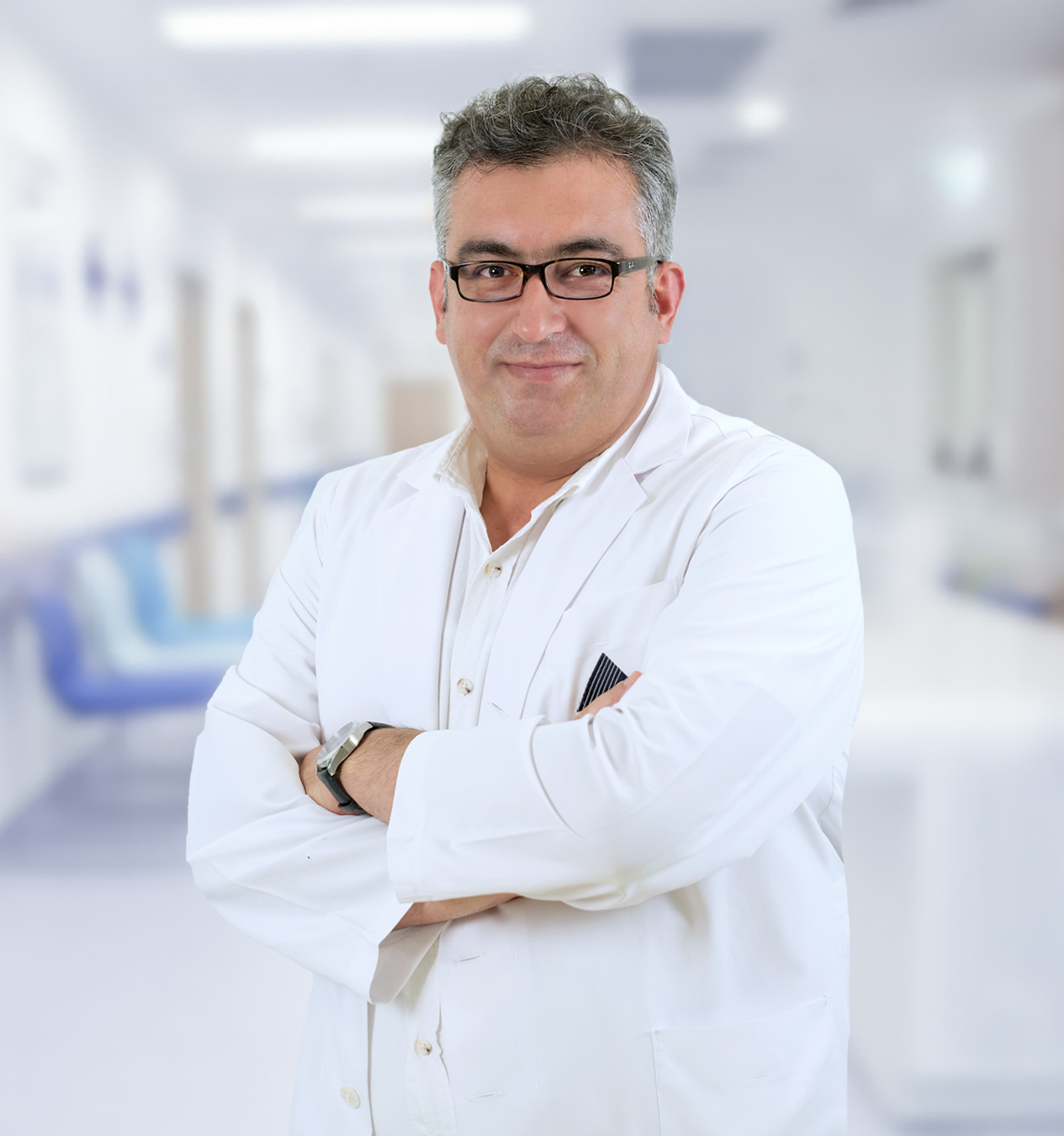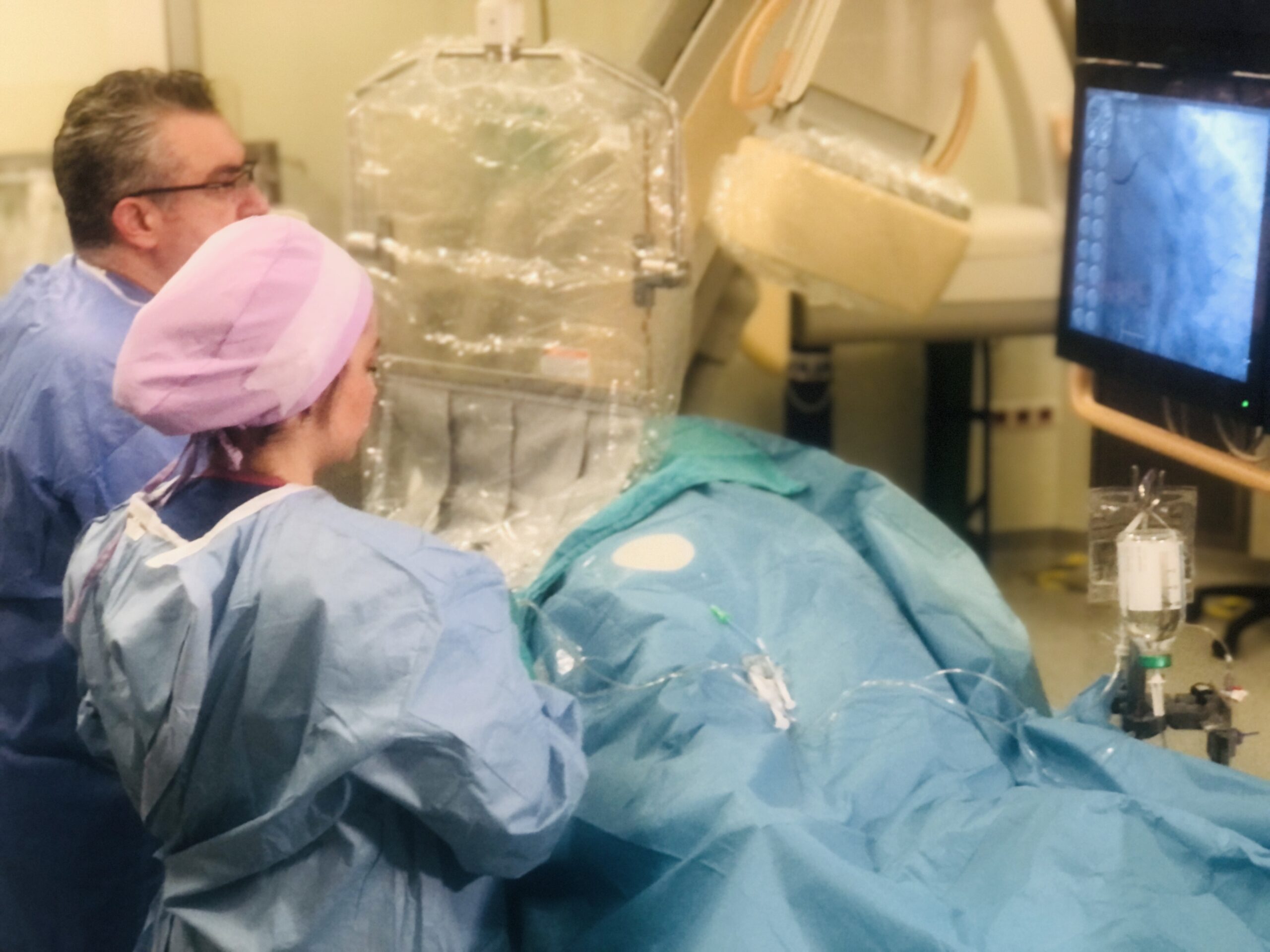stated that any pain between the jaw and the navel could be a sign of a heart attack. Drawing attention and warning about cold weather and early morning hours, Prof. Dr. Özveren underlined that it is possible to determine the risk of heart attack in advance with some imaging methods, especially in people with risk factors, and thus it is possible to prevent possible crises.
 Stating that there are more than 300 million heart patients in the world and more than 2 billion people are at risk of heart disease, Prof. Dr. Olcay Özveren made statements about risk factors and treatment methods. Indicating that the statistics in Türkiye are parallel to the data in the world, Prof. Dr. Özveren warned, “We know that approximately 33 percent of all deaths in the world and in Türkiye are caused by cardiovascular diseases. Obesity, sedentary lifestyle, smoking, family history of heart disease, and presence of diabetes are among the risk factors for heart attack. To protect against heart attack, it is necessary to eliminate modifiable risk factors.”
Stating that there are more than 300 million heart patients in the world and more than 2 billion people are at risk of heart disease, Prof. Dr. Olcay Özveren made statements about risk factors and treatment methods. Indicating that the statistics in Türkiye are parallel to the data in the world, Prof. Dr. Özveren warned, “We know that approximately 33 percent of all deaths in the world and in Türkiye are caused by cardiovascular diseases. Obesity, sedentary lifestyle, smoking, family history of heart disease, and presence of diabetes are among the risk factors for heart attack. To protect against heart attack, it is necessary to eliminate modifiable risk factors.”
Underlining that especially people with risk factors should be more careful in this regard, Prof. Dr. Özveren said, “It is possible to predict the risk of heart attack in people in this group with some imaging methods, and thus, it is possible to prevent possible crises.”
“Quitting smoking alone reduces the risk by up to 36 percent.”
Pointing out that smoking is a major risk factor for heart attack, Yeditepe University Hospitals Cardiology Department Head Prof. Dr. Olcay Özveren said, “Quitting smoking alone reduces the risk of heart attack by up to 36 percent. High cholesterol levels increase the risk of heart attack and cardiovascular diseases. Treating this and lowering cholesterol levels are among the factors that alone reduce the risk of heart attack. If you have diabetes, diabetes regulation is very important. High blood sugar causes atheroma plaque to form on the vessel wall. This is one of the most obvious situations on the way to a heart attack. Regulating this situation is among the factors that reduce the risk of heart attack. Exercise is important for heart health. Daily exercise of 10-13 thousand steps or 5 kilometers per hour also reduces the risk of heart attack.”
“10 thousand steps is not a legend”
Stating that 10 thousand steps is not a myth. Prof. Dr. Özveren said, “New studies have confirmed that this is not a myth. To put it simply, exercises performed at a speed of 5.2 kilometers per hour reduce the risk factors for cardiovascular diseases and heart attack.”
“Intense exercises aimed at increasing muscle mass increase the risk of heart attack”
Recording that intense exercise increases the risk of heart attack, Prof. Dr. Olcay Özveren said, “What we call a heart attack is actually a condition that occurs when the heart vessel is blocked. Situations that result in sudden deaths, especially in young athletes, are caused by disease groups other than cardiovascular diseases. It originates from the disease we call hypertrophic cardiomyopathy, which is accompanied by some rhythm problems or thickening of the heart muscle. Balanced nutrition and regular exercise are important in this sense. We especially recommend isotonic exercises in this sense. In other words, exercises should be done to increase muscle length, not to thicken the heart muscle. These; Exercises such as swimming, running, fast walking, cycling. We know that this type of exercise prevents the risk of heart attack. But exercises aimed at increasing muscle mass by lifting weights increase blood pressure and increase the risk of heart attack. We observe these in the studies carried out.”
“It can be seen at any age”
Expressing that heart attack can occur at any age, Prof. Dr. Özveren said, “We see this more in the 18-75 age group. One of the reasons why we often see heart attacks in the young population is fast heart disease . The spread of food culture. Secondly, the increase in the use of cigarettes and tobacco products. Recently, covid infections have also affected clotting factors. This situation caused the risk of heart attack and heart attack-related deaths to increase in covid- related deaths.”
“You can have a heart attack silently”
Indicating that heart attack symptoms consist of a wide spectrum, Prof. Dr. Olcay Özveren said, “On the one hand, we encounter what we call sudden death, and on the other hand, the patient may actually have a heart attack silently. It is especially common in diabetic patients and older age groups. In such patient groups, the cardiovascular system may be blocked, but the person may not notice it. “When people consult a doctor for different reasons, we can detect this condition with some imaging methods or physical examination.”
Beware of pain spreading to the chest, back, arm, shoulder and jaw!
Noting that the most common symptom that patients encounter is chest pain, Prof. Dr. Özveren continued as follows:
“Pain anywhere between the jaw and the navel may be a sign of a heart attack. When we define this, we detect it as pain that spreads and is reflected in the anterior chest wall, back, arms, shoulders, jaw, stomach and esophagus area. It takes at least 5 minutes. It usually increases with exertion and disappears with rest. If there is such a clinical finding, it would be beneficial to consult the nearest physician.”
“The most important thing to do is to stay calm.”
“The most basic thing to do when you encounter a heart attack is to stay calm,” said Prof. Dr. Olcay Özveren, “Because in cases of stress, excitement and fear, the heart accelerates and the workload increases. In this sense, it is necessary to calm the person and manage the crisis by calling 112 and calling an ambulance. On the other hand, if you have an aspirin at hand, it can be administered to the patient at 300 milligrams. There is no equivalent to maneuvers such as laying the patient down and lifting his feet or making him cough.”
 “If a person has had a heart attack once, the likelihood of repeating it increases”
“If a person has had a heart attack once, the likelihood of repeating it increases”
Underlining that a person who has a heart attack for the first time is in a very high risk group within the next 10 years, Dr. Özveren said, “After having a heart attack, the risk of recurrent heart attacks increases. In this sense, the risk of encountering a second or third heart attack increases. If you have had a heart attack once or if your heart artery is found to be blocked, you are in a very high risk group. The rate of having a heart attack again in the next 10 years can increase by almost 30 percent. In other words, 3 out of 10 patients who have had a heart attack have an increased risk of having another heart attack within 10 years. To prevent this, we minimize existing risk factors by treating them; it may not be possible to eliminate them completely. If you modify and treat the risk factors, the rate of heart attack decreases significantly.”
Pay attention to cold weather and early morning hours
Warning against cold weather and early morning hours. Prof. also Dr. Özveren said, “In studies and clinical practices, we see that as the weather gets colder in the winter months, the rate of contraction of the vessels, which we call vasospasm, increases. This causes chest pain symptoms and therefore increases the risk of heart attack. We all have a circadian rhythm in our body. Due to the change in neurohormonal balance in this circadian rhythm in the morning, the risk of heart attack increases even more.”
“Stress is one of the most important risk factors”
“Stress alone is a minor risk factor on the road to heart attack,” said Özveren, adding, “Intense stress can cause problems related to hormonal balance, increase heart rate, and cause changes in the vasomotor response in the coronary vessels. Therefore, stress is one of the most important risk factors on the road to heart attack.”
“Heart attack can also lead to other diseases”
Stating that heart attack can also lead to other heart-related diseases, Prof. Dr. Özveren said, “For example, heart attack and cardiovascular occlusion related to the front side of the heart can also cause heart failure if not treated in the future. Heart attack is also one of the causes of some heart valve diseases.”
“We can determine the risk of heart attack in advance”
Talking about the interventions implemented to determine heart attack risks, Cardiology Specialist Prof. Dr. Özveren, Yeditepe University Hospitals shared the following information:
“With the development of technology and imaging methods becoming more accessible and cheaper, we can determine the risk of heart attack in advance. Especially with the widespread use of tomographic angiography, the presence of vascular disease can be detected with almost 100 percent accuracy. Of course, this helps us determine and prevent the risk of heart attack. Of course, imaging methods also have complications and side effects. Since there are imaging methods using radiation, we do not do it for everyone. We select patients according to their risk factors. For example, those with diabetic atypical chest pain, heavy smokers, those with a family history of the disease, and people under the age of 65. Age is an important factor. Because we see a lot of calcification, especially in the coronary arteries, over the age of 65. Calcification in the cardiovascular system makes it difficult to diagnose. In people with this situation, methods such as nuclear medicine methods or medicated echocardiographic methods or cardiac MRI are used. We also know that recently there have been developments in health guidelines around the world to treat people with risk factors.”
“Artificial intelligence is on the agenda in determining risk factors”
Recording that artificial intelligence is also on the agenda in determining risk factors, Prof. Dr. Olcay Özveren said, “We can frequently use artificial intelligence in imaging methods in the next 10 years. But now there are equipped electrocardiographic methods using artificial intelligence. These are also used to determine the risk of heart attack and cardiovascular occlusion. We will encounter the use of artificial intelligence in this sense very frequently in the coming period.”



